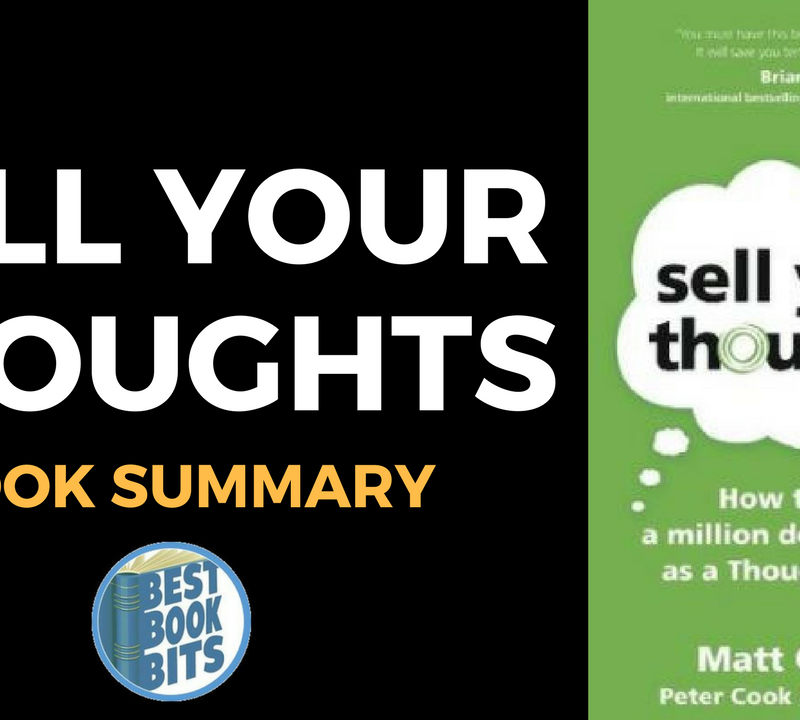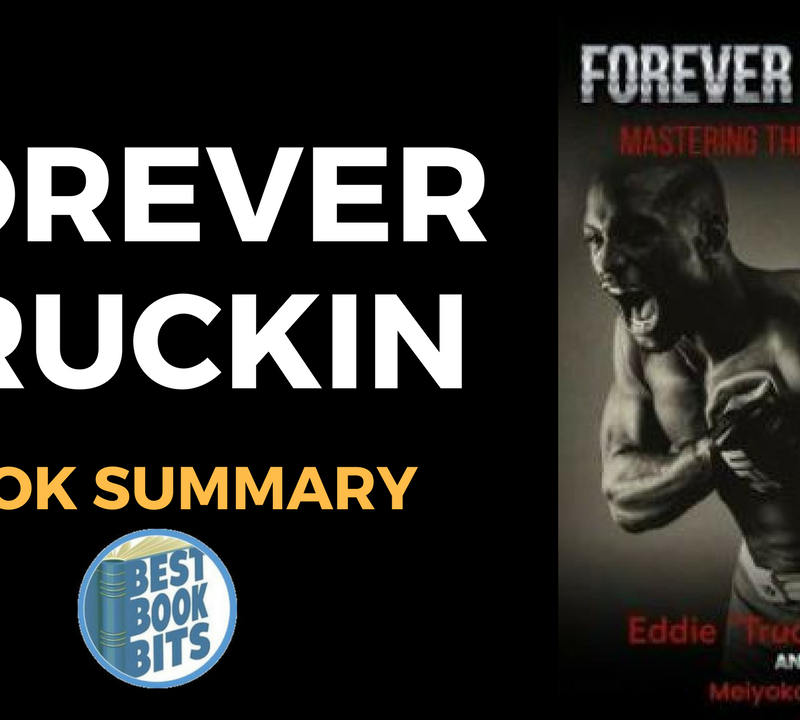★DOWNLOAD THIS FREE PDF SUMMARY HERE
? MY FREE BOOK TO LIVING YOUR DREAM LIFE”
? SPONSOR BESTBOOKBITS BY USING PATREON
? SUPPORT BESTBOOKBITS BY CLICKING THE LINKS BELOW
- 150 PDF Summaries
- Coaching Program
- Subscribe to My Channel
- Website
- Spotify
- Book Club
- Mailing List
IN A NUTSHELL
Matthew Syed was the three times Commonwealth table-tennis champion. He wanted to explore what makes people be successful in sport (and also in life).
We tend to assign words like ‘genius’, ‘naturally gifted’ and ‘prodigy’ to people who achieve success – yet Syed claims that excellence is primarily down to sustained ‘purposeful practice’.
This cultural belief in giftedness creates problems at both ends of the scale: 1st the ‘gifted’ believe they therefore do not need to work hard at something and so squander their ability and 2nd ‘the non-gifted’, do not believe they have the talent and therefore do not bother to make the effort. His book asserts that with effort comes excellence (and through excellence, often comes success).
Thus we should praise effort – not talent.
KEY FACTORS THAT DRIVE EXCELLENCE & SUCCESS
10,000 hours of purposeful practice
Syed supports Gladwell’s assertion that a major component of success is many hours of sustained practice (cf 10,000 hours = 2.7 hours a day for 10 years). Syed insists it more than just hours – the practice itself needs to be ‘purposeful’ with high standards and quality feedback.
Ericsson (‘91) looked at violinists at the Music Academy in West Berlin. They were assessed into three groups (from most able to least able). The only difference was the number of hours they had practiced – 10,000; 8,000 and 6,000 hours – and the rule was unbroken – all 10,000-hour students were in the top category (and nor were there any 6,000 hour students in this top category). They concluded, “The differences between expert performers and normal adults reflect a life-long persistence of deliberate effort to improve performance.”
Another study of British musicians found that the high achievers learned no faster than others per hour – they merely did more hours.
This finding has been validated in many sports (e.g. Tennis – Agassi hit a million balls a year). Even so called child prodigies (such as Mozart) put in the hours (he had clocked up 3500 hours by the time he was 6 and had studied his art for 18 years before he wrote his Piano concerto No 9 at the age of 21. Tiger Woods started when he was 2 years old. Serena Williams started playing at 3, her sister at 4).
Every now and then there is a new technique that dramatically lifts performance levels (e.g. Fosbury flop). But these are not sudden sparks of creative inspiration – they actually come from deep, sustained immersion in purposeful practice. Picasso, Michelangelo, and research amongst poets have all identified their creative inspiration came from hours upon hours of dedicated practice.
A mindset of hard work (Innate Talent vs. Perseverance)
Dweck (‘78) – 330 students 11/12 years old given a questionnaire to assess their beliefs about talent, then categorised into two groups – those with a fixed view on talent (i.e. its innate) and the other who saw talent as something that could be developed. They were then all given an IQ test with the questions getting significantly harder. Those with the fixed view on talent tended to give up sooner (as they labelled themselves as not clever enough – hence no amount of hard work would compensate).
Dweck conducted another experiment later on, where she took 400 11 year olds and gave them a series of simple puzzles. Afterwards, she randomly divided them into 2 groups. To the first she praised their intelligence (“you must be really smart!”); the other half she praised their effort {“you must have worked really hard!”). After the first test, they were given the choice to take an easy or a hard test. Only 1/3rd of the ‘smart’ kids elected for the hard test, whilst 90% of the effort kids took the hard test.
Finally, everyone had to do one extra test where Dweck found the effort kids improved their score by 30% and the smart kids decreased their average score by 20%.
Thus we need to be very careful when we set people up as being ‘innately talented’ as it holds people back from trying (as they fear ‘being found out’) and hence will reduce their long term performance.
Pushing well past the comfort zone
Excellence comes from constantly stretching to reach a much higher goal (often a goal that only the coach/manger thinks is possible). Thus training with (and being with) the best is critical to drive up performance (and mindset).
Tiger Woods used to push his practice balls into the sand to deliberately make it more difficult.
One of the reasons Brazil is so successful at soccer is because most of the footballers played futsal. The smaller, heavier ball demands greater precision and encourages more frequent passing.
Expectations
Performance often rises (or reduces) to the level of expectations put upon them.
Belief
Belief is a critical element to success. Often it’s the coach/mentor who has a greater belief than the individual, but eventually the performer needs to develop it as well.
Belief is also critical not only in driving long term motivation but also for the event itself. Jonathan Edwards, when he won gold in the triple jump at the Sydney games, had a belief in ‘The will of God’. This allowed him to relax and perform at an unconscious level of mastery (‘choking’ is when the conscious brain tries to take control of performance. Unfortunately most tasks are too complex for the conscious mind to handle). Others find their belief elsewhere (which can spread to quirky, irrational, superstitious rituals).
Doubt is a dangerous virus that quickly spreads and paralyzes (so need to filter out negative thoughts and instead focus on the many previous positive reference experiences).
Arsene Wenger remarked, “To perform at your maximum, you have to teach yourself to believe with an intensity that goes way beyond logical justification. No top performer has lacked this capacity for irrational optimism.
Be where the great are
Great players tend to come together in one place – thus it’s key to be in the places where they are.
For example, the city of Reading produced more outstanding table-tennis players than the rest of the country put together. Spartek (a small impoverished area in Moscow) generated more top 20 women tennis players than the whole of America.
Quality feedback
Feedback is key to learning. “If you don’t know what you are doing wrong, you can never know what you are doing right”.
Learning from failure
Paradoxically, failure is a key part of excellence. Successful performers have a positive attitude to failure.
For example, Shizuka Arakawa, one of Japan’s greatest ice-skaters fell over more than 20,000 times in her progression to become the 2006 Olympic champion.
Environment shapes
Environmental factors can help shape (or destroy) the potential.
Desmond Douglas (aka Speedy Gonzalez), played table tennis in such a small room he was forced to play close the table. This shaped him into becoming the fastest reacting player – he had learned to ‘encode’ the micro movements involved in fast play.
The high altitude Nandi area in Kenya has produced more marathon runners than anywhere else in the world. The area is so poor that children would regularly run to school (up to 20Km away).
The expansive capacity of the brain
Experiments have shown that the brain under constant stimulation can expand and develop. Purposeful practice builds new neural pathways. The brain is able to make sense of this wealth of data – accumulated over time and encode it into useful information that then drives precise refined action of the elite sportsperson.
For example the seemingly super sharp reaction time of various ball sports is an illusion. Experiments have shown that often these top sportspeople are no faster in standard tests than other people. The player is able to detect minute subtle movement in the bowler/servers arm and shoulder which from years and years of practice has led them to read the direction of the bowl/serve before the ball has even been played. It’s this practice that has created unconscious patterns and distinctions not open to the lesser trained.
“Gretzky’s (a US hockey player) gift…is for seeing…amid the mayhem, Gretzky can discern the game’s underlying pattern and flow, and anticipate what’s going to happen faster and in more detail than anyone else.”
The same is found in experts in many fields of decision-making. They instinctively know – based on years of practice and an ability to pick up (often unconsciously) minute distinctions and patterns that the rest of us are blind to.
Serendipity, luck & opportunity
Often it’s a series of lucky events and circumstances (usually outside of one’s consciousness and control) that ‘conspire’ to make it possible for success (so maybe a bit more humility in one’s success would be more appropriate).
Genetic makeup is not found to be the primary reason for sporting success. Because Blacks are perceived to be better at sports they are more likely to be picked and hence given more opportunity to excel (and the principle is reversed in business)
★DOWNLOAD THIS FREE PDF SUMMARY HERE
? MY FREE BOOK TO LIVING YOUR DREAM LIFE”
? SPONSOR BESTBOOKBITS BY USING PATREON
? SUPPORT BESTBOOKBITS BY CLICKING THE LINKS BELOW













